Coral Restoration gives reefs a helping hand
Humans hastened the destruction of the reefs, but we also have the power to bring them back.
How do corals reproduce?
To understand how coral restoration works, you need to understand how corals reproduce themselves first.
Sexual reproduction
Sexual reproduction is like how many animals have babies. Corals release tiny sperm and eggs into the water, often all at once during special times. The sperm and eggs meet and combine in the water, forming a tiny larva. This larva floats in the ocean currents, then finds a good substrate to settle on. Once settled, it grows into a new coral polyp, which then starts to grow into a whole new coral colony. This method is preferable as it introduces genetic diversity and makes the reefs more resistant against change. Coral need to be a certain size before they can spawn, hence it is important we conserve the larger specimens.
Asexual reproduction
Asexual reproduction is when a coral makes copies of itself without needing sperm and eggs. One common way is budding, where new polyps simply grow out of existing ones, making the coral colony bigger. Another way is fragmentation, where a piece of coral breaks off (maybe from a storm) and if it lands in a good spot, it can grow into a completely new, identical coral colony. These methods are great for quickly growing and repairing parts of the reef, especially after damage.
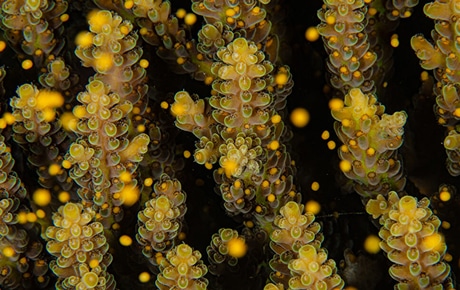
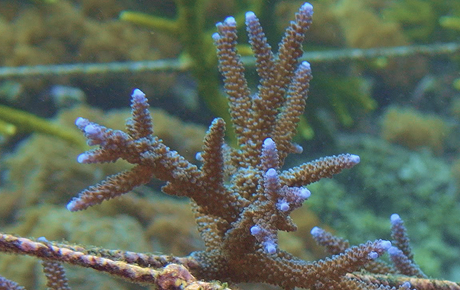
How Coral Restoration works
Coral restoration takes advantage of corals’ ability to reproduce asexually to bring back by transplanting healthy grafts onto a decimated or damaged reef.
Maintaining donor colonies in nurseries
Ocean Gardener with the help of our partners, maintain nurseries which contain donor coral colonies. We select the right species for the conditions of the restoration site to maximize success based on our founder Vincent’s 25 year experience farming corals.
We keep a variety of representative species with different lineage to ensure genetic diversity. We have to monitor the nurseries to ensure we remove any coral eating pests to maximize growth and survival. Subsequently when they are larger, we can use them to harvest fragments for replanting. Coral restoration is a lot like gardening, hence our NGO’s name.
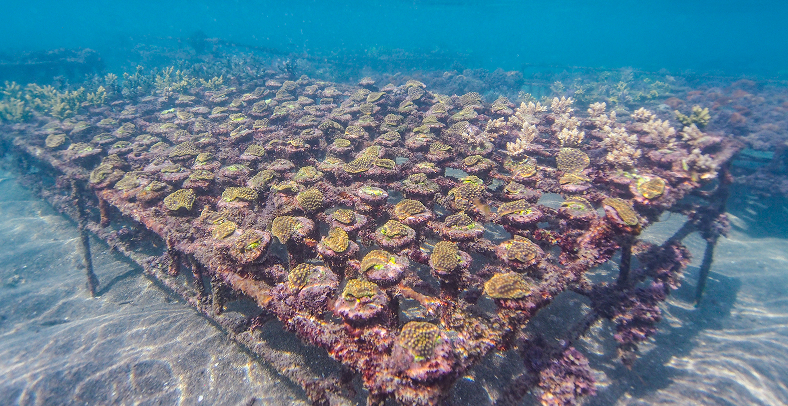
Maintaining donor colonies in nurseries
Ocean Gardener with the help of our partners, maintain nurseries which contain donor coral colonies. We select the right species for the conditions of the restoration site to maximize success based on our founder Vincent’s 25 year experience farming corals.
We keep a variety of representative species with different lineage to ensure genetic diversity. We have to monitor the nurseries to ensure we remove any coral eating pests to maximize growth and survival.
Subsequently when they are larger, we can use them to harvest fragments for replanting. Coral restoration is a lot like gardening, hence our NGO’s name.
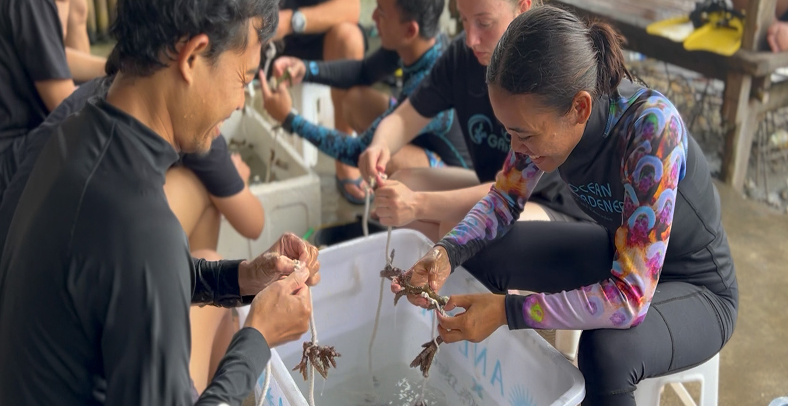
Harvesting fragments from our nuseries
We take advantage of the ability for corals to regrow from cuttings, much like plants through asexual reproduction.
When we wish to recolonize a new area, coral fragments are harvested from the donor colonies in our coral nurseries. We select from a list of common hardy species based on the different project’s needs.
We prioritize sustainable practices by locating the coral nurseries in shallow water where they can be accessed via snorkelling or foot, consciously avoiding the use of gasoline-powered boats.
There are many different techniques of restoration from ropes to sea stars. We select the best method suited to the nursery’s unique conditions.
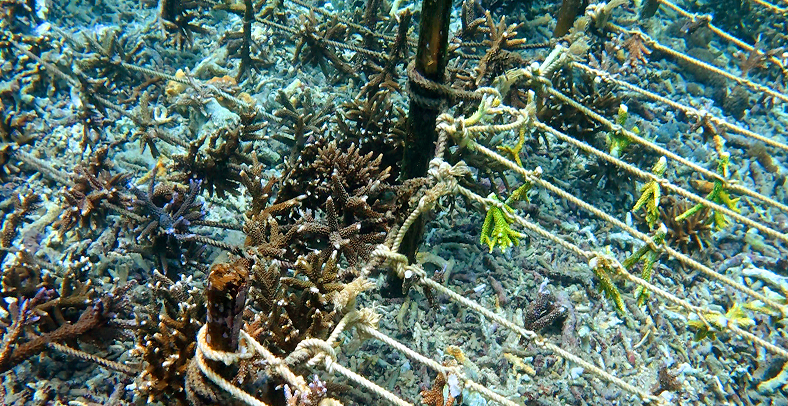
SEE IT IN ACTION. VISIT A NURSERY!
Come spend an educational day visiting one of our coral nurseries where we will show you how coral restoration works and you can plant your own coral. All proceeds go towards our coral restoration efforts.